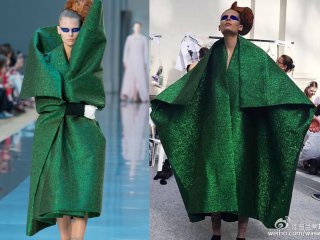Phuel
Well-Known Member
- Joined
- Feb 18, 2010
- Messages
- 5,476
- Reaction score
- 7,682
Where's that progression, through? And most importantly, to whom? It most certainly isn't coming from John, because if you quite literally replace the fabrics of most of those looks with luxurious ones, you would get an old Galliano collection in its essence; and it isn't for Margiela, because he's giving the hause a very allianted look. If anything, this is a big regression.
The problem is that he's working as if he was back at his house, point and simple. He's producing the collections he would produce there, just simply using the "deconstructed" and "unusual fabrics" to make it seem like it belong at MMM, but it doesn't. It comes out as gimmicky, deceiving and soulless. Margiela is so modern, urban, youthful, with its finger on the pulse of society. It's not pretty and glamorous. It doesn't need fantasy and romance.
Fair enough Marc.
Perhaps not a progression of moving modern high fashion to any new, unfound level. For me, it's a progression in the evolution of what Margiela left off because John isn't churning out MMM's greatest hits. I appreciate that so much more than people harping on and on about retaining the "DNA" of a house. That's a lack of confidence to me, and what John is doing here is moving forward-- with his touch, which is all the more genuine for a designer working under another's namesake. There's obviously very strong traces of John's vision here-- as it should be, but it's spliced with Margiela's style enough-- all the while not bringing Margiela's past signatures-- at least not in any obvious fashion. I appreciate how refined it all is rather than relying on all the "rawness"-- all the un-prettiness and un-glamorous characteristics you're speaking of that's often associated with Margiela of the past, as the past designers for this House have also done. That's gimmicky and a crutch to me. There's a refreshing lack of gimmicks here.
Interesting to me how we can read something altogether differently about a designer's work: I've never got the impression Margiela was ever about having his finger in the electric socket of culture. His designs always gave me the impression of discovery, of agelessness and free of any limits; if one associated his designs with youth and some version of a movement/ moment in culture, then that's fine of course, but there's more to his offering than only raw, un-pretty, and non-traditionally un- glamorous designs. I happen to like John's more polished, more refined and even, like dior_couture1245 said, "cartoony" contributions to Margiela's architecture.







